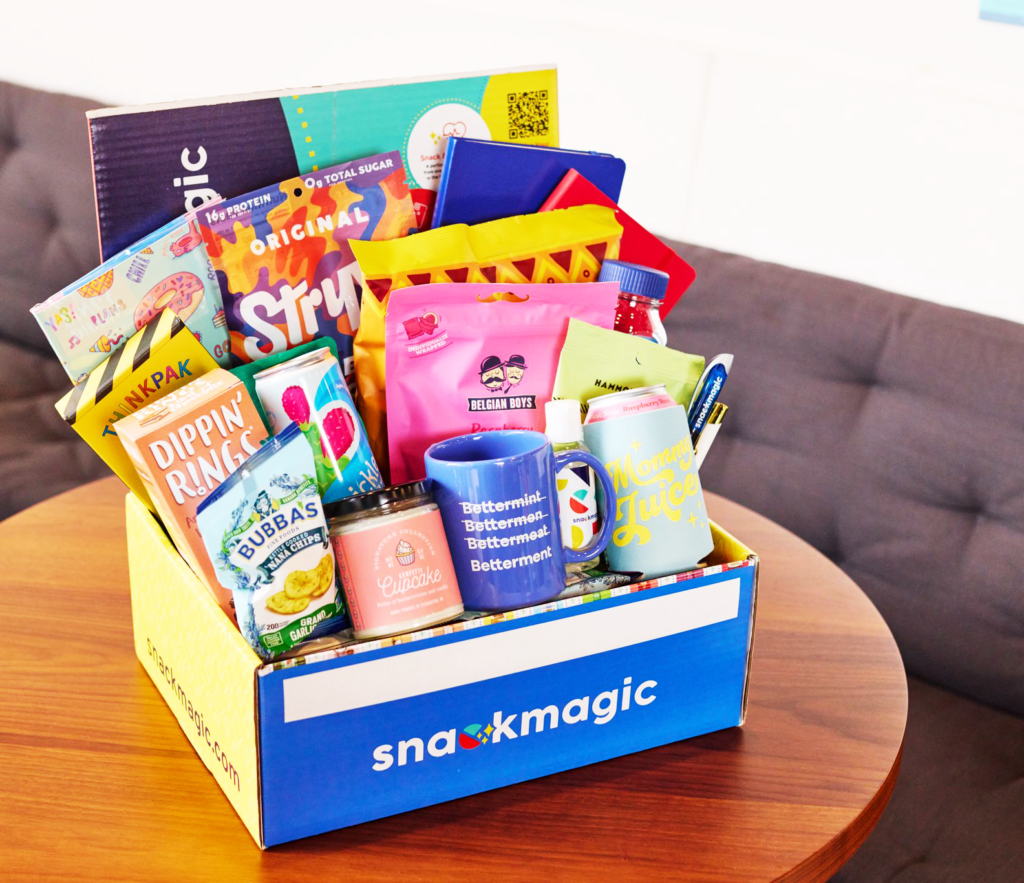Employee motivation is critical for companies looking to boost organizational performance, productivity, and morale. Gallup research shows that 70% of US workers are disengaged at work, costing companies billions in lost productivity annually. Finding the best ways to motivate your team is key to improving employee engagement, company culture, and teamwork.
The most effective leaders understand that all employees want to feel valued and know their work matters. You can increase motivation dramatically by giving employees positive feedback, flexibility, opportunities for growth, and open communication. These relatively simple tactics tap into intrinsic motivations that are more powerful than monetary rewards. They facilitate higher job satisfaction, loyalty, and effort over the long term.

How SwagMagic can help your brand?
- Bulk Buy & Save on your gifts!
- Curate Customized Swag Boxes!
- Launch Your Store for your employees!
- Secure Swag Storage with us!
This blog post will explore actionable tips to motivate your employees. You will learn how small changes to your management approach can outsize employee morale, engagement, and performance. Focusing on company culture, intrinsic rewards, clear goals, and open communication can inspire your teams and unlock higher productivity levels across your organization. The ideas presented aim to help you create an empowering work environment where employees are excited to come to work and feel their contributions matter.

Understanding Employee Motivation
Motivating employees is an ongoing challenge for businesses across industries and sizes. A motivated team is key to a thriving business, increased productivity, and better workplace culture. Whether you are a team leader, HR professional, or business owner, understanding the nuances of what keeps your workforce motivated is crucial.
Motivational factors can differ from person to person, and understanding these can help craft the perfect strategy.
Factors Influencing Motivation:
- Monetary Compensation
- Career Advancement
- Work-Life Balance
- Job Satisfaction
- Team Dynamics

Scientific and Proven Ways to Keep Employees Motivated
Share positive feedback
According to numerous studies, positive reinforcement significantly enhances employee motivation. For instance, a Harvard Business Review article highlights that employees who receive regular positive feedback are more engaged and productive.
As studied by Martin Seligman and others, the concept of positive psychology in the workplace emphasizes focusing on strengths and accomplishments rather than just correcting mistakes. This approach has been proven to boost morale and job satisfaction, leading to better performance.
Real-world corporate practices have shown that positive feedback is a powerful motivator. Companies like Google and Microsoft have implemented feedback systems focusing on positive aspects and constructive criticism. This approach aligns with the management principle of “catching people doing something right,” as Ken Blanchard advocates in his management theories.
Regular employee recognition programs, constructive performance reviews, and celebrating small victories are standard methods to apply this principle.
Offer Work-life balance
Research in organizational psychology suggests that work-life balance is crucial for employee motivation. A study published in the “Journal of Vocational Behavior” found that employees who perceive an excellent balance between work and personal life show higher job satisfaction and are less likely to experience burnout.
Offering flexible working hours, remote work options, and respecting personal time are vital strategies. The theory of work-life integration, as opposed to strict separation, has gained traction, promoting a more holistic approach to employee well-being.
Curate the perfect box of handpicked gift they’ll love and send joy their way
Successful companies often attribute part of their success to offering work-life balance. For example, Netflix’s flexible leave policy and Basecamp’s 4-day workweek are innovative approaches to this. These practices are grounded in the understanding that a well-rested and personally fulfilled employee is more productive.
In practice, companies offer various forms of flexible scheduling, generous leave policies, and support for personal endeavours, recognizing that these investments in employees’ personal lives pay dividends in their professional output.
Promote Teamwork and Autonomy
Studies in industrial-organizational psychology underline the importance of teamwork and autonomy in motivating employees. Research by Hackman and Oldham’s Job Characteristics Model shows that tasks that provide a sense of teamwork and a degree of autonomy result in higher job satisfaction and intrinsic motivation.
Encouraging collaborative environments while allowing employees some control over their work fosters a sense of ownership and engagement. This balance is crucial in modern organizational settings, where teamwork and individual responsibility are valued.
Proven corporate strategies often involve balancing teamwork with autonomy. Tech giants like Google use cross-functional teams to promote collaboration while ensuring individual autonomy through personal projects and flexible roles. This approach is rooted in the understanding that while teamwork fosters innovation and problem-solving, autonomy enhances job satisfaction and creativity.
In practice, companies implement team-based projects with clear goals while allowing flexibility in how individuals contribute, thus leveraging the strengths of both teamwork and personal initiative.
Clear Communication is Key
Open, transparent, and regular communication is the cornerstone of any successful team. Foster an environment where employees feel heard and valued.
Tips for Effective Communication:
- Regular Check-ins
- Open-door Policy
- Team Meetings
- Anonymous Feedback

Performance Incentives makes Employees Feel Motivated
Performance incentives such as bonuses, raises, and promotions are the most direct way of motivating your team.
Types of Performance Incentives:
- Monetary Bonuses
- Promotions
- Stock Options

Professional Development
Employees are more likely to stay motivated when they see opportunities for career advancement or skill development.
Development Strategies:
- Workshops
- Webinars
- Mentorship Programs

Flexible Work Environment
Flexibility in the work environment can significantly improve employee motivation. Consider offering remote working options or flexible hours.
Flexibility Options:
- Remote Work
- Flexi-hours
- Job Rotation

Corporate Gifting for Motivation and Engagement
Corporate gifting is a lesser-known but highly effective way to motivate employees. It’s a way of saying ‘thank you’ and showing their contributions are valued.
Corporate Gift Ideas:
- Personalized Desk Items
- Gourmet Food Baskets
- High-quality Stationery

Employee Swag to Motivate Your Employees
Branded merchandise or ‘swag’ can also serve as a motivation booster. Swag items help foster a sense of belonging and team unity.
Popular Swag Items:
- T-shirts
- Water Bottles
- Backpacks
Incorporating scientific methods and research-backed approaches can significantly elevate your strategies for motivating employees.
Self-Determination Theory (SDT)
This theory suggests that people are most motivated when they feel autonomous, competent, and related to others. Encourage employee autonomy by allowing them to make decisions and take ownership of their tasks.
Implementation:
- Provide options for employees to choose projects that interest them.
- Implement systems that foster peer relationships.

Goal Setting Theory
Clear and specific goals that are challenging yet achievable can significantly improve motivation and performance.
Implementation:
- Use SMART goals (Specific, Measurable, Achievable, Relevant, Time-bound).
- Encourage team members to set their own goals.

Maslow’s Hierarchy of Needs
Understanding the basic needs of your employees can be the key to motivating them. The hierarchy includes physiological needs, safety, belongingness, esteem, and self-actualization.
Implementation:
- Offer comprehensive healthcare benefits (physiological & safety).
- Create a culture of inclusivity (belongingness & esteem).

Reinforcement Theory
Positive reinforcement can be a powerful tool for encouraging desired behavior.
Implementation:
- Use frequent and immediate positive feedback.
- Offer small but meaningful rewards for accomplishments.

Job Characteristics Model
This model focuses on designing jobs that are highly meaningful and motivating. It talks about skill variety, task identity, task significance, autonomy, and feedback.
Implementation:
- Rotate job roles or diversify tasks.
- Provide instant and transparent feedback mechanisms.

Expectancy Theory
Employees are more motivated when they expect that their efforts will lead to desired outcomes.
Implementation:
- Be transparent about the correlation between performance and rewards.
- Maintain a merit-based evaluation system.
Herzberg’s Two-Factor Theory
According to this theory, there are job factors that result in satisfaction (Motivators), and there are job factors that prevent dissatisfaction (Hygiene factors).
Implementation:
- Focus on job enrichment for motivators like skill variety and responsibility.
- Ensure hygiene factors like a clean workplace and fair company policies.
Psychological Safety
Research shows that teams with a high level of psychological safety perform better.
Safety Measures:
- Encourage open dialogue and expression of opinions without fear of reprimand.
- Conduct team-building exercises that foster trust.
Employee Recognition Programs
Recognizing employee performance publicly can significantly improve motivation levels.
Ways to Implement Employee Recognition:
- Regular ‘Employee of the Month’ awards.
- Public shoutouts in team meetings or company newsletters.

Mindfulness and Well-being Programs
Recent research suggests that employees who engage in mindfulness practices tend to be more motivated and perform better.
Wellness Program Implementation:
- Offer in-house yoga or meditation sessions.
- Provide resources for mental health support.
Incorporating these scientifically-backed methods into your motivation strategies can substantially benefit both employees and the organization. By understanding the psychological and social factors that drive your team, you can foster a work environment that is productive and satisfying for all involved.
Motivating your employees is a multi-faceted challenge that requires a nuanced approach. From performance incentives to corporate gifting and employee swag, the strategies to keep your team engaged are numerous and diverse. Implementing these tips can significantly elevate your team’s morale and set your business on the path to success.

Transforming Employee Engagement: SwagMagic’s Innovative Solutions to Motivate Employees
SwagMagic, an innovative Employee Swag and Corporate Gifting platform, is revolutionizing how organizations engage and appreciate their workforce. It’s a sunny Tuesday morning, and the SwagMagic team is excitedly buzzing. They’ve just launched their latest offering: a customizable swag store that organizations can integrate directly into their internal systems.
Inside the virtual store, employees can browse through a wide range of branded merchandise—from cozy hoodies and sleek water bottles to high-quality stationery. Every item is meticulously selected to resonate with employees, designed to make them feel a part of something bigger than themselves.
But SwagMagic doesn’t stop there. They also offer Employee Appreciation Kits, curated snack packages of personalized gifts that employers can send out on special occasions like work anniversaries, promotions, or just to say ‘thank you.’ These kits are more than just a collection of items; they’re a tangible expression of gratitude and recognition, aimed to elevate the employee experience.

As orders pour in, the team feels a sense of fulfillment. They know they’re not just delivering products; they’re delivering happiness, one package at a time. By offering solutions like a swag store and appreciation kits, SwagMagic is helping organizations build a culture of motivation, appreciation, and unity, without the logistical nightmares traditionally associated with corporate gifting.

Leave a Comment